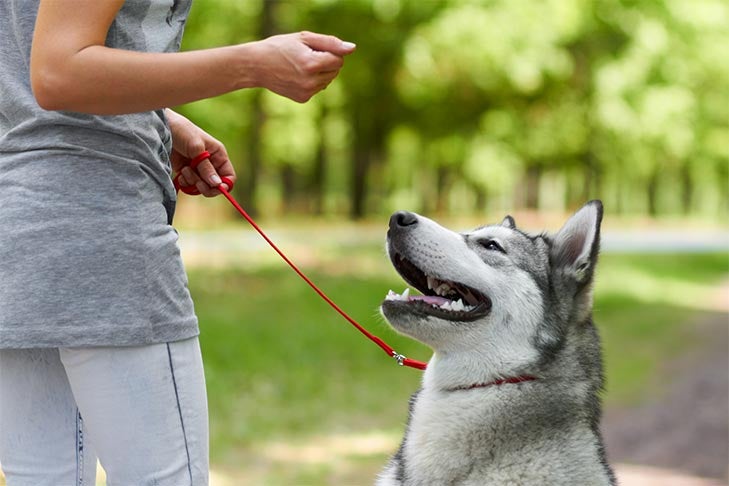AKC is a participant in affiliate advertising programs designed to provide a means for sites to earn advertising fees by advertising and linking to akc.org. If you purchase a product through this article, we may receive a portion of the sale.
You’ve probably had one of those moments when you’re sure that you taught your dog a cool new trick and then you go to show someone, but your dog doesn’t do it. Why is it that dogs are better behaved at home? For example, they may do something perfectly at your house and then seem unable to perform the same thing while at the park or in training class.
Better at Home
It’s frustrating, and even embarrassing, when it feels like your dog performs certain behaviors more consistently at home versus when they’re out in the world. Dogs are highly situational, so just because your dog knows how to do something well in one place doesn’t mean they’ll automatically be able to perform the same skill somewhere else. The “better at home” phenomenon is very natural and normal.
When you’re at home, your dog is likely relaxed, calm, and comfortable. They know where they are and what is going on around them. In this familiar space, your dog can focus on learning new and challenging skills. When you take the skills elsewhere, your dog may need extra support to learn how to do this trick in a new environment.
Pay Attention to Distraction Levels
Just like you wouldn’t ask a kindergartener to do calculus, you want to make sure that you’re asking your dog to perform skills that are appropriate for their age and training level. Always start teaching new skills in areas with low distraction, which gives your dog the ability to focus. Once your dog knows a behavior in a low-distraction environment at home, you can start to work on that skill in more distracting environments, like a park or training facility.
When you’re training in a more distracting environment, you’ll want to bring out the higher-value training treats. Be prepared to lure or help your dog out more during the first few repetitions of a trick or cue. This reminds your dog that this is the same skill they’ve already mastered at home.

Learning something new is hard, so until your dog has a solid mastery of a skill, it will be very challenging for them to perform it somewhere distracting. Try to set your dog up for success by putting them into training situations where they can be successful with their current level of skill.
Look Beyond Stubbornness
Dog training requires a lot of patience. It can be easy to get frustrated or discouraged. Many people mistake a dog’s lack of understanding — or inability to focus amid distractions — for stubbornness.
But if you’re asking your dog to perform a specific behavior and they aren’t doing it, chances are, the dog isn’t refusing to comply. Rather, it’s likely that the reinforcement rate (how often you reward your dog) is too low, the distraction level is too high, and/or your dog doesn’t yet fully understand the skill and isn’t sure what you want.
Dogs want to please us and they want to learn new things, so a refusal to perform a behavior should be carefully considered. If you’re asking for the behavior in a new area, or with new distractions present, your dog may be unable to perform because what you’re asking for is too complicated to do in a distracting environment. That said, if your dog suddenly stops performing a skill they know well in familiar environments, they may be experiencing pain or discomfort. In this case, it’s a good idea to schedule a thorough evaluation with your vet.
Intentionally Increasing Distractions
We all want our dogs to listen to us anywhere, but that doesn’t happen overnight. It’s important to slowly and intentionally increase the level of distraction. Think about what is most distracting for your dog. For some, that might be the sight of other dogs or being near people, while other dogs might struggle to focus most when near a barbecue or small animals like squirrels. And for some dogs, it will be all of the above.

Slowly build up your dog’s comfort and familiarity with a trick, skill, or behavior. They’ll eventually become proficient and confident when performing a specific behavior with the current level of distraction. From there, the goal is to increase the distraction level until they can perform that skill anywhere, regardless of what’s happening.
A slow progression might involve starting to teach a new skill inside your house, then moving to your backyard (if you have one). From there, you might move in front of your house (where there might be more things going on), then a quiet neighborhood street, and then finally moving onto training in a park, or another area with more of the distractions that are hardest for your dog. If your dog struggles to perform a skill in a new area at any point, just take a (literal) step back and increase your dog’s distance from the distractions before trying again.

